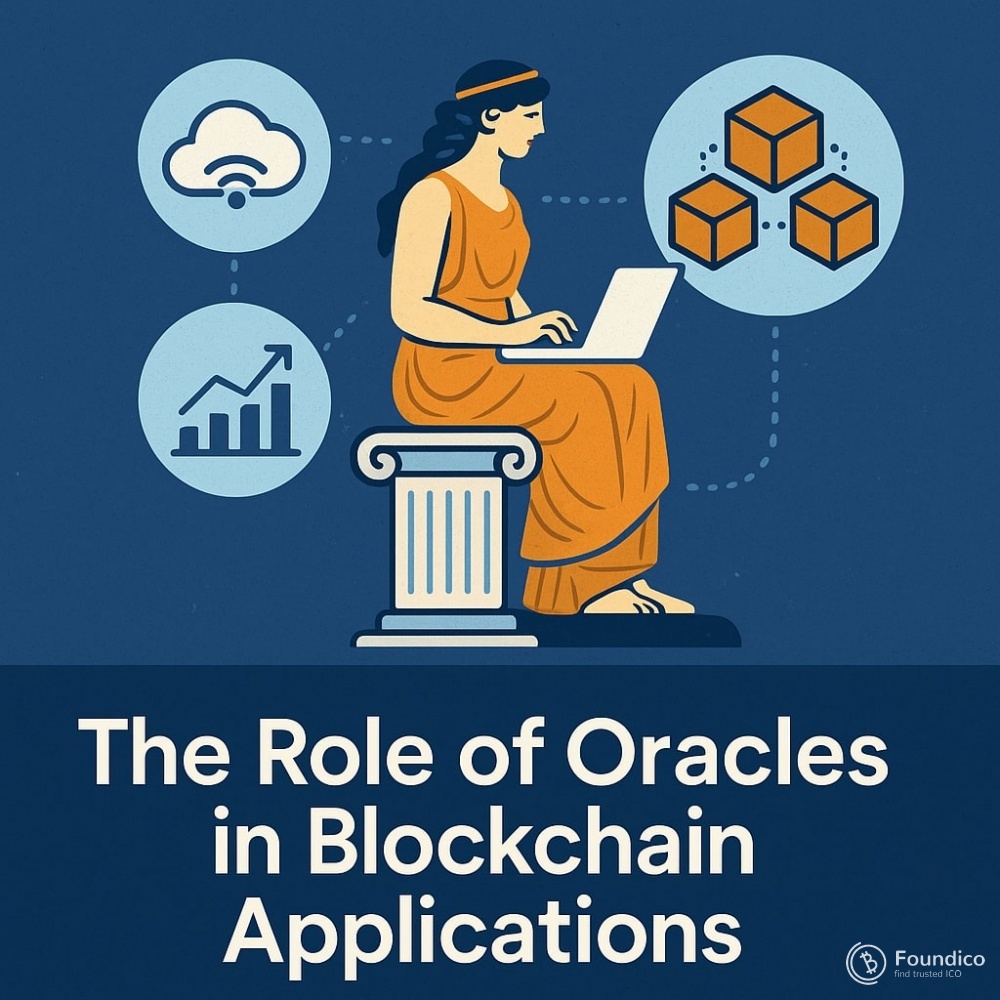The Role of Oracles in Blockchain Applications

By Dr. Pooyan Ghamari, Swiss Economist and Visionary
Blockchain technology has revolutionized how we think about trust, transparency, and decentralization. Yet, despite its immense potential, blockchains are inherently closed systems. They are excellent at recording and verifying internal transactions, but they lack the ability to access real-world information on their own. This is where oracles enter the picture. Oracles serve as bridges between blockchains and the outside world, enabling smart contracts to interact with external data and unlocking an array of innovative applications.
1. Why Blockchains Need Oracles
Blockchains are deliberately designed to be isolated for the sake of security and immutability. However, for smart contracts to be truly useful, they often require external inputs. For example:
-
A decentralized insurance contract may need weather data to trigger payouts.
-
A prediction market requires real-world event outcomes, like election results.
-
A decentralized finance (DeFi) protocol needs price feeds to calculate lending ratios.
Without oracles, these contracts would remain blind to external conditions, significantly limiting blockchain’s practical use.
2. How Oracles Work
An oracle acts as a trusted data source that feeds external information into the blockchain environment. This process involves several steps:
-
Data Collection – The oracle gathers information from an off-chain source (e.g., market prices, IoT devices, or APIs).
-
Verification – To ensure reliability, some oracle systems use consensus mechanisms to verify data accuracy.
-
Transmission – The oracle sends the data onto the blockchain, often through a smart contract.
-
Execution – Smart contracts use this data to execute predefined conditions, such as releasing funds or updating system states.
This bridge between external information and immutable ledgers expands blockchain’s scope beyond financial transactions into countless real-world industries.
3. Types of Oracles
Different oracle models have emerged to address various blockchain needs:
-
Software Oracles: Deliver digital information like stock prices, sports scores, or exchange rates.
-
Hardware Oracles: Use physical devices, such as sensors, to supply real-world inputs (e.g., shipping confirmations or biometric scans).
-
Inbound Oracles: Provide external data to blockchains (e.g., weather updates for insurance).
-
Outbound Oracles: Send blockchain data to external systems (e.g., a smart lock that opens once a payment is confirmed).
-
Consensus-based Oracles: Aggregate inputs from multiple sources to avoid reliance on a single point of failure.
Each type addresses specific challenges and opportunities, broadening blockchain’s impact across industries.
4. Oracles in DeFi (Decentralized Finance)
The most prominent application of oracles today is in DeFi. Price feeds from oracles allow lending platforms, decentralized exchanges, and derivatives markets to function efficiently. Without oracles, DeFi protocols could not access real-time asset prices, making them vulnerable to manipulation and instability.
For instance, a lending platform relies on oracles to determine collateral ratios. If the oracle fails or provides manipulated data, the entire system could collapse. Thus, reliable oracles are critical for safeguarding billions of dollars in digital assets.
5. Challenges and Risks
While oracles expand blockchain’s potential, they also introduce new vulnerabilities—often referred to as the “oracle problem.”
-
Single Point of Failure: If an oracle provides false data, the smart contract may execute incorrectly.
-
Centralization Risks: Relying on one oracle provider undermines blockchain’s decentralization ethos.
-
Data Manipulation: Attackers may corrupt external data sources or intercept transmission channels.
Addressing these issues requires innovations such as decentralized oracle networks (DONs), which use multiple independent data providers to enhance trust and accuracy.
6. Future Outlook of Oracles
The future of oracles is bright, as they are integral to making blockchain a truly global and practical technology. Several trends are shaping this evolution:
-
Decentralized Oracle Networks like Chainlink are setting new standards for transparency and reliability.
-
Cross-chain Oracles are enabling data sharing across multiple blockchain ecosystems.
-
Integration with AI and IoT will further expand use cases, from smart cities to supply chain automation.
-
Legal and Regulatory Oracles may emerge, providing compliance data to ensure smart contracts meet jurisdictional requirements.
These developments will allow blockchain applications to seamlessly merge with real-world economies and governance structures.
Oracles are the vital connectors that allow blockchains to engage with the world beyond their coded walls. They empower smart contracts to act on real-world events, unlocking the vast potential of decentralized applications across finance, logistics, healthcare, and beyond.
As a Swiss Economist and Visionary, I see oracles not just as technical tools but as catalysts of a new economic paradigm—one where data integrity, automation, and decentralization converge to reshape the way societies function.
The role of oracles is not only about feeding information but also about building trust bridges between digital and physical realities. Their evolution will be central to blockchain’s journey from a niche innovation to a foundational layer of the global economy.

 Maxi Doge - $MAXI is the meme-powered token of Maxi Doge—a body-building, 1000x-leverage-trading Doge who represents ultimate strength, hustle, and the grind of the bull market. He never skips leg day, a 1000x trade, and he definitely never touches grass.
Maxi Doge - $MAXI is the meme-powered token of Maxi Doge—a body-building, 1000x-leverage-trading Doge who represents ultimate strength, hustle, and the grind of the bull market. He never skips leg day, a 1000x trade, and he definitely never touches grass.